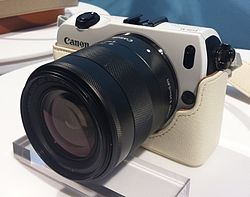Digital media
Digital media (compared to analog media) is a communication media that works on digital codes. This also includes text, audio, video, and graphics that are transmitted over the internet for viewing or listening to on the internet.
Today, computing is based on the binary numeral system, so the "digital" refers to the use of "0" and "1" to show data. Computers are machines that use binary digital data as information. Digital media ("Formats for presenting information" according to media) like digital audio, digital video and other digital "content" can be created, referred to and distributed by digital information processing machines. Digital media is a big change from (analog) media.
Digital and analog data
The transformation of an Analog signal to Digital information by an analog-to-digital converter is called sampling. According to information theory, sampling is a reduction of information. Most digital media are based on turning analog data into digital data and vice-versa (see digital recording, digital video, television versus digital television).
Working with digital media
Compared to analog data, digital data is easier to control, and can be made into many copies without losing any quality. Mathematical operations can be made into digital information regardless of its meaning (you can add "2" to the data "65" and view the result either as the hexadecimal number "43" or the letter "C"). Thus, it is possible to use the same compression operation onto a text file or an image file or a sound file.
Examples of digital media
Digital Media Media
Hard drives store information in binary form and so are considered a type of physical digital media.
Digital codes, like binary, can be changed without reconfiguring mechanical parts.
Related pages
Other websites
- "Reference Model for Electronic Business Media" Archived 2010-02-02 at the Wayback Machine
- Digital MediaNecessary terms and definitions Archived 2010-01-15 at the Wayback Machine







